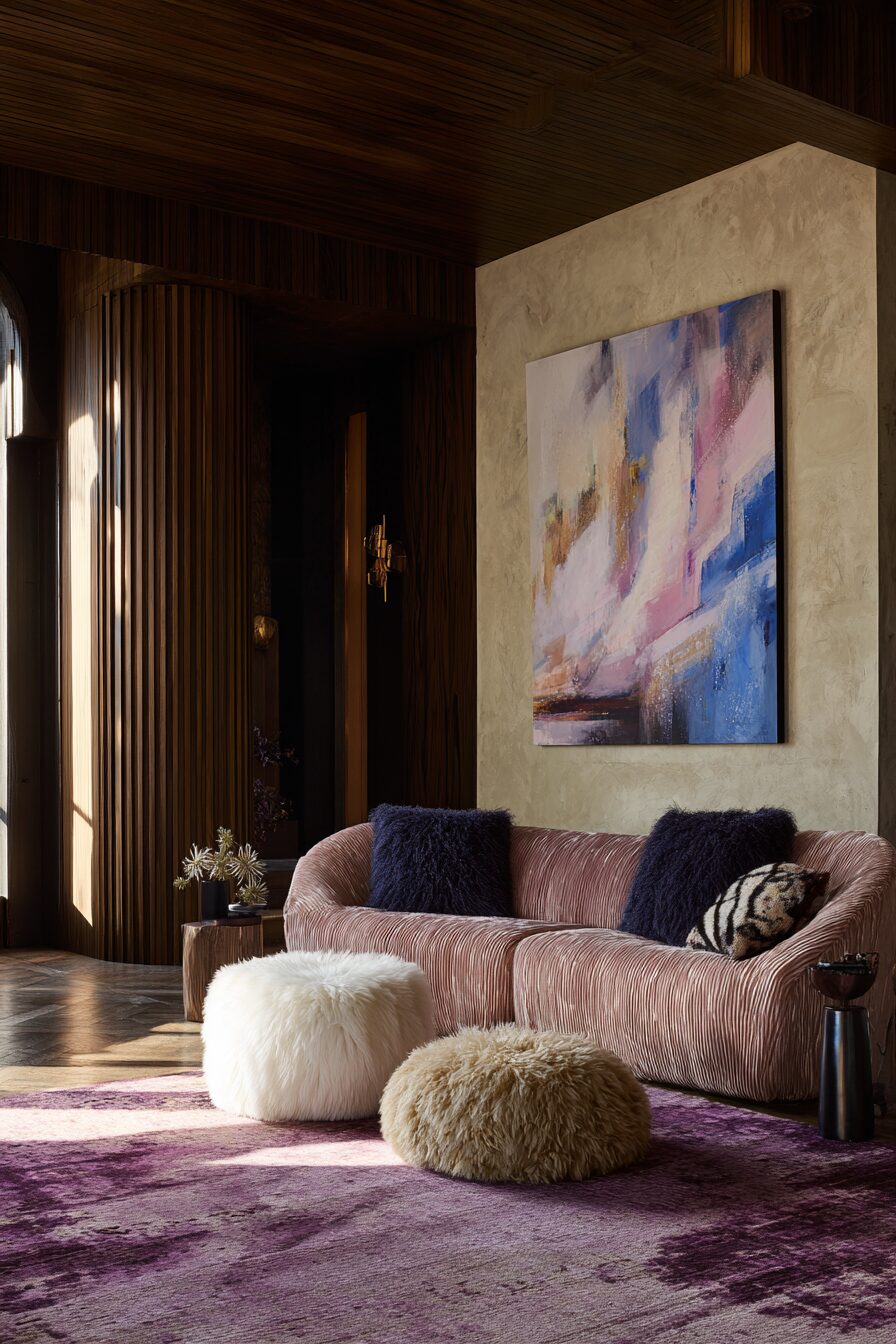Creating a dedicated spiritual space in your home isn’t just trendy—it’s a powerful way to cultivate peace in today’s chaotic world.
A tranquil corner that speaks to your soul can become your daily refuge, helping you reconnect with yourself and practice mindfulness.
The following ideas will help you design a spiritual sanctuary that resonates with your personal journey while creating a visually stunning space that calms the mind and nourishes the spirit.
Minimalist Meditation Corner
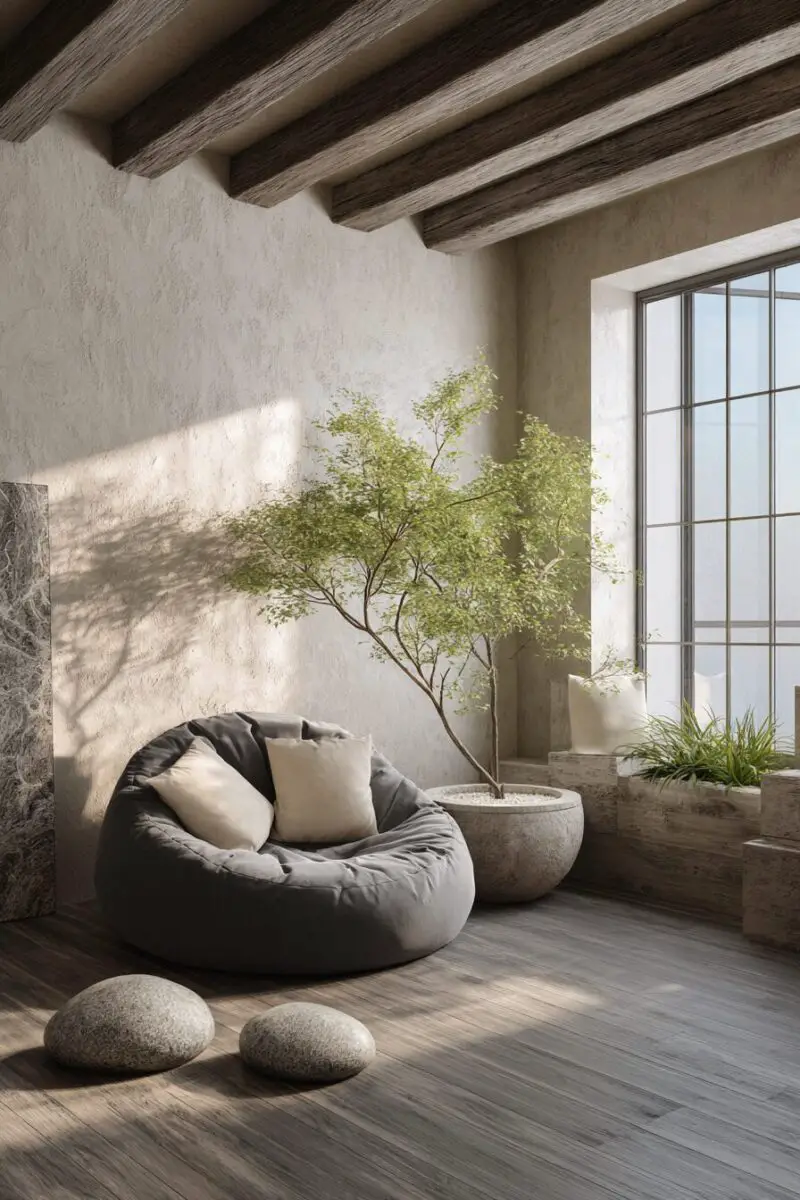
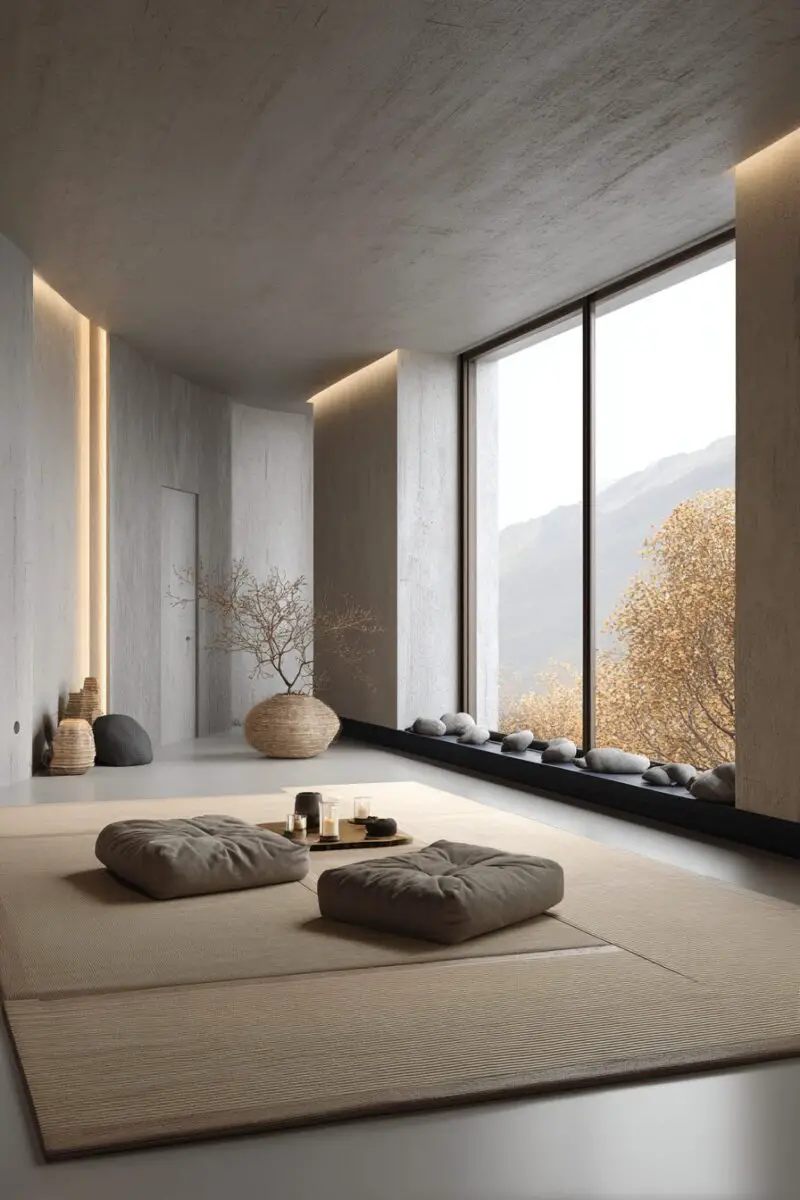
The power of a minimalist meditation space lies in what you choose to leave out, not what you add.
Creating a clutter-free zone signals to your brain that this area exists solely for mental clarity and spiritual connection.
Start with a low-profile meditation cushion or bench that supports proper posture while keeping you comfortable for longer sessions.
Choose a quiet corner facing a blank wall or window with a calming view—this reduces visual distractions that can pull your attention away during meditation.
Incorporate just one or two meaningful objects that ground your practice, such as a small statue, a special stone, or a single candle.
The color palette should remain neutral with soft whites, warm beiges, or gentle grays to create a sense of expansiveness rather than confinement.
Floor-to-ceiling sheer curtains can define the space while allowing natural light to filter through, creating a luminous quality that feels both protective and open.
A small plant can introduce a living element without creating clutter—jade plants and peace lilies thrive with minimal care while purifying the air.
Keep electronic devices completely out of this space—no exceptions—to maintain it as a technology-free sanctuary where your mind can truly decompress.
The simplicity of this space stands in direct contrast to the complexity of modern life, making it easier to drop into deeper states of meditation more quickly.
Remember that a minimalist space requires regular maintenance to prevent everyday items from accumulating—commit to a weekly reset to maintain its power.
TRENDING NOW
15+ Creative Reading Nook Ideas for Any Small SpaceNature-Inspired Sanctuary
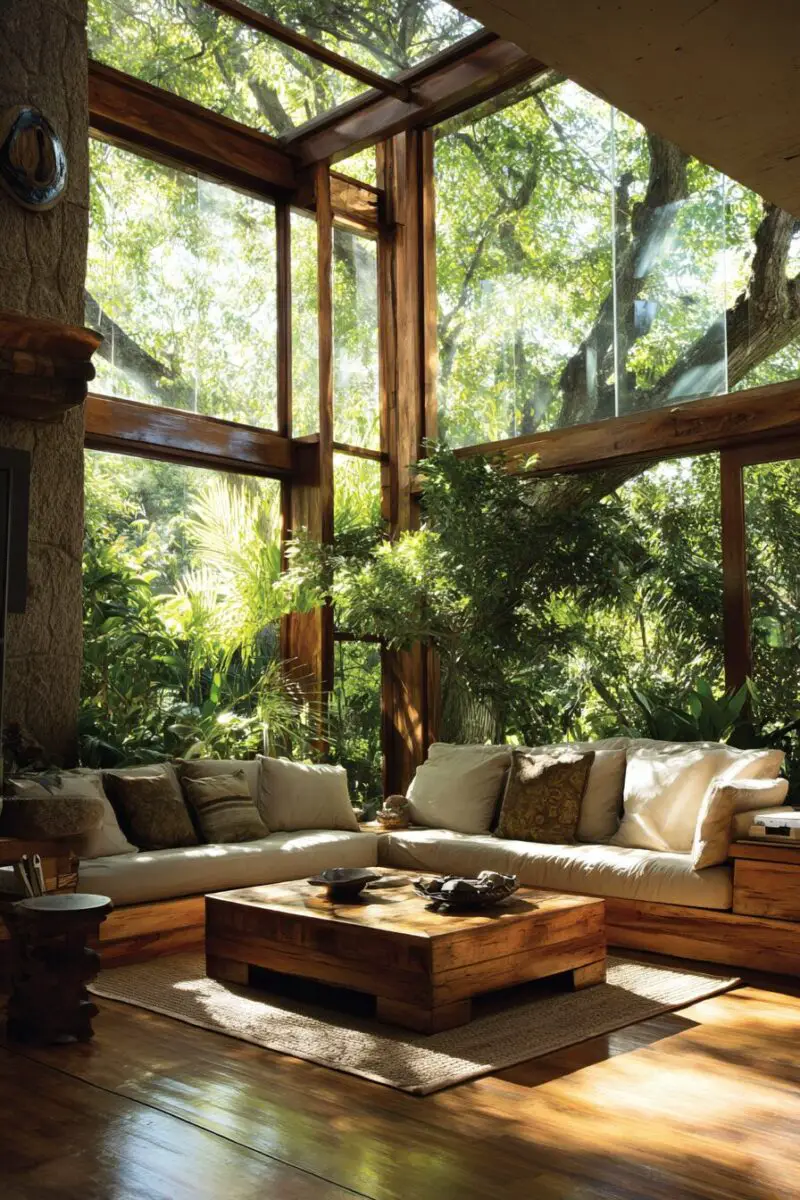
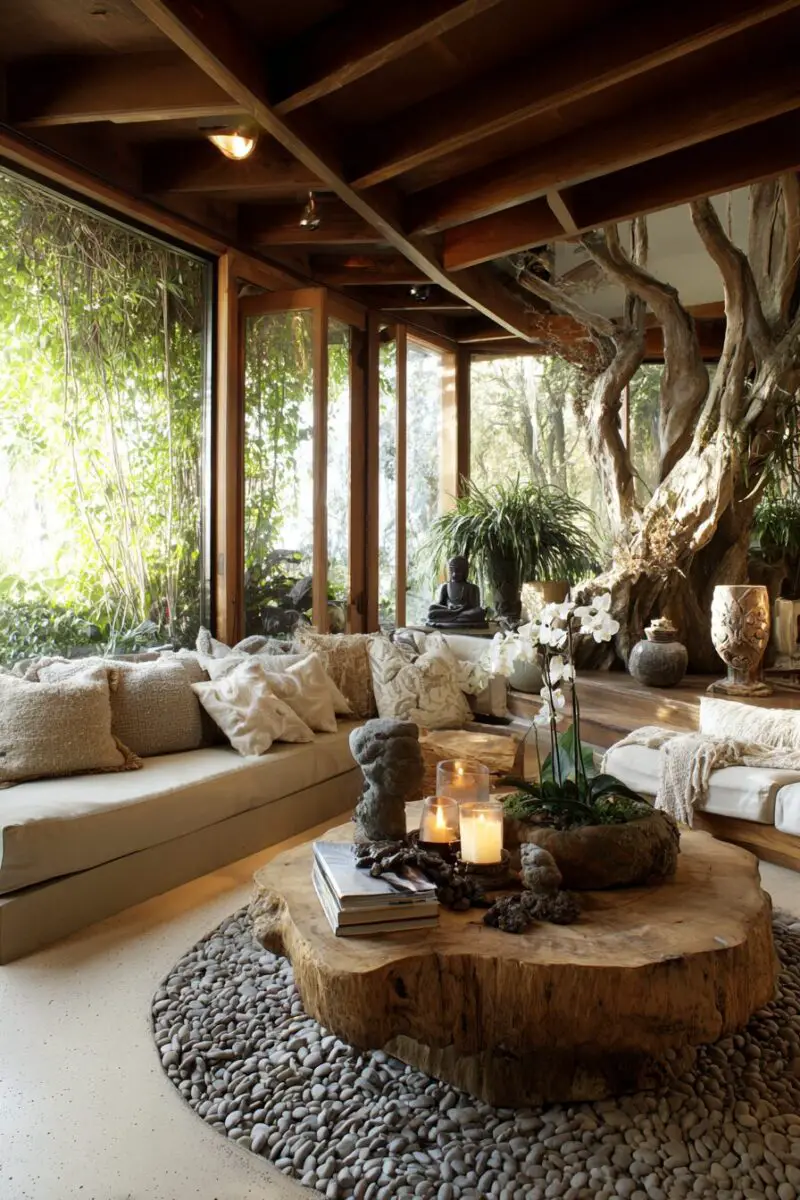
Bringing the outdoors inside creates an immediate sense of peace that resonates at a primal level in your body and mind.
Start by positioning your spiritual space near a window where natural light can flow freely, creating shadows and highlights that change throughout the day.
Select 3-5 plants with varying heights and textures—consider easy-care varieties like snake plants, pothos, and ZZ plants if you’re new to plant parenthood.
Incorporate natural wood elements through furniture pieces, wall hangings, or unfinished branches collected from meaningful outdoor spaces.
A small tabletop fountain with river rocks creates the gentle sound of flowing water, which has been proven to lower blood pressure and reduce stress hormones.
Choose textiles made from natural fibers like cotton, linen, wool, or hemp, which connect you to ancient traditions of weaving and craft.
Add natural scents through cedar blocks, dried herbs, or essential oils derived from trees and plants rather than synthetic fragrance options.
Incorporate stones and crystals collected from places with personal significance, allowing them to serve as tangible reminders of meaningful experiences in nature.
A nature sound machine or carefully curated playlist of outdoor sounds can complete the sensory experience when actual outdoor time isn’t possible.
Leave space between your natural elements—crowding too many plants together diminishes their visual impact and creates a cluttered rather than calming effect.
Natural light changes throughout the day will transform your space, creating a room that feels alive and connected to the rhythms of the earth.
Design Your Dream Room in Minutes!
🏡 Start Creating FREE →Crystal and Gemstone Haven

Crystals have been used for spiritual practices across cultures for thousands of years, each carrying unique energetic properties that can transform a space.
Begin by selecting crystals that personally resonate with you rather than following trends—hold different stones and notice which ones create a sense of calm or excitement.
Create a dedicated crystal display using floating shelves, glass cabinets, or natural wood platforms where your collection can catch the light.
Large statement pieces like amethyst geodes or quartz clusters serve as powerful focal points that instantly elevate the energy of a room.
Smaller tumbled stones can be arranged in patterns, mandalas, or sacred geometric shapes on altars or tabletops.
Selenite wands or towers placed near windows create spectacular light refractions when sunlight streams through them, painting your walls with rainbows.
Crystal grids—patterns created using multiple stones—can be designed with specific intentions like peace, creativity, or healing, becoming functional art pieces.
Incorporate hanging crystals or prisms in windows to create movement and light play throughout the day as the sun shifts position.
Larger river rocks or geodes can double as doorstops or bookends, bringing crystal energy into functional aspects of your space.
Learn about proper crystal care—some need occasional cleansing in saltwater, moonlight, or sage smoke to maintain their energetic properties.
Sacred Sound Space
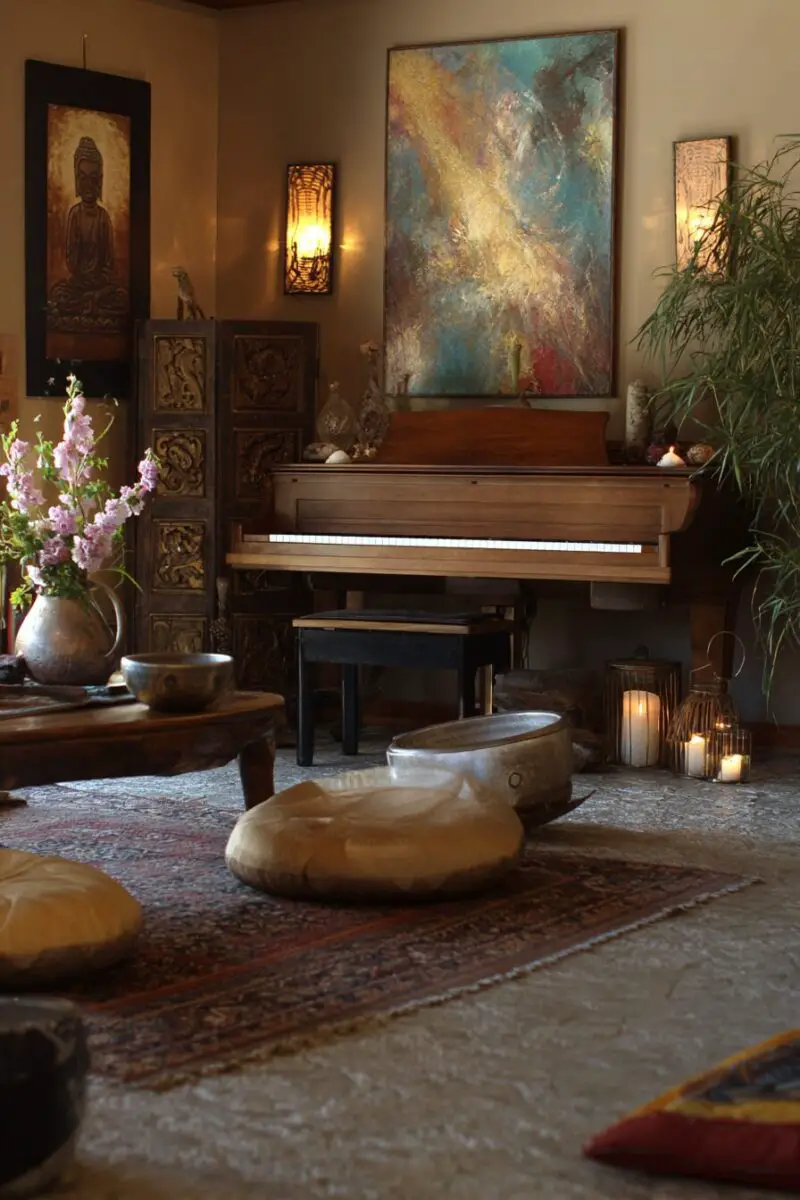
Sound has been used in spiritual practices for millennia because of its unique ability to bypass the thinking mind and access deeper states of consciousness.
Creating a dedicated sound healing space begins with considering the acoustics—soft textiles on walls, carpeting, and ceiling hangings can create the perfect resonance chamber.
Incorporate at least one singing bowl—crystal or Tibetan metal—positioned on a stable surface where you can easily play it while seated comfortably.
A collection of tuning forks tuned to different frequencies allows you to direct sound healing to specific energy centers or areas of the body.
Wind chimes hung near windows capture natural air currents, creating spontaneous music throughout the day that reminds you to stay present.
Sound can be incorporated through technology as well—a high-quality speaker system for guided meditations or sacred music completes the sensory experience.
Create a comfortable seating arrangement that allows you to fully receive sound vibrations—floor cushions, a reclining chair, or even a dedicated yoga mat.
Sound-absorbing panels disguised as artwork can improve acoustics while maintaining the aesthetic appeal of your spiritual space.
A small table or shelf dedicated to sound tools keeps everything organized and creates a ritual around selecting instruments for your practice.
The vibrations of certain instruments can be felt through the floor—consider placing cushions directly on hard surfaces rather than elevated seating to fully experience this aspect.
Aromatherapy Retreat
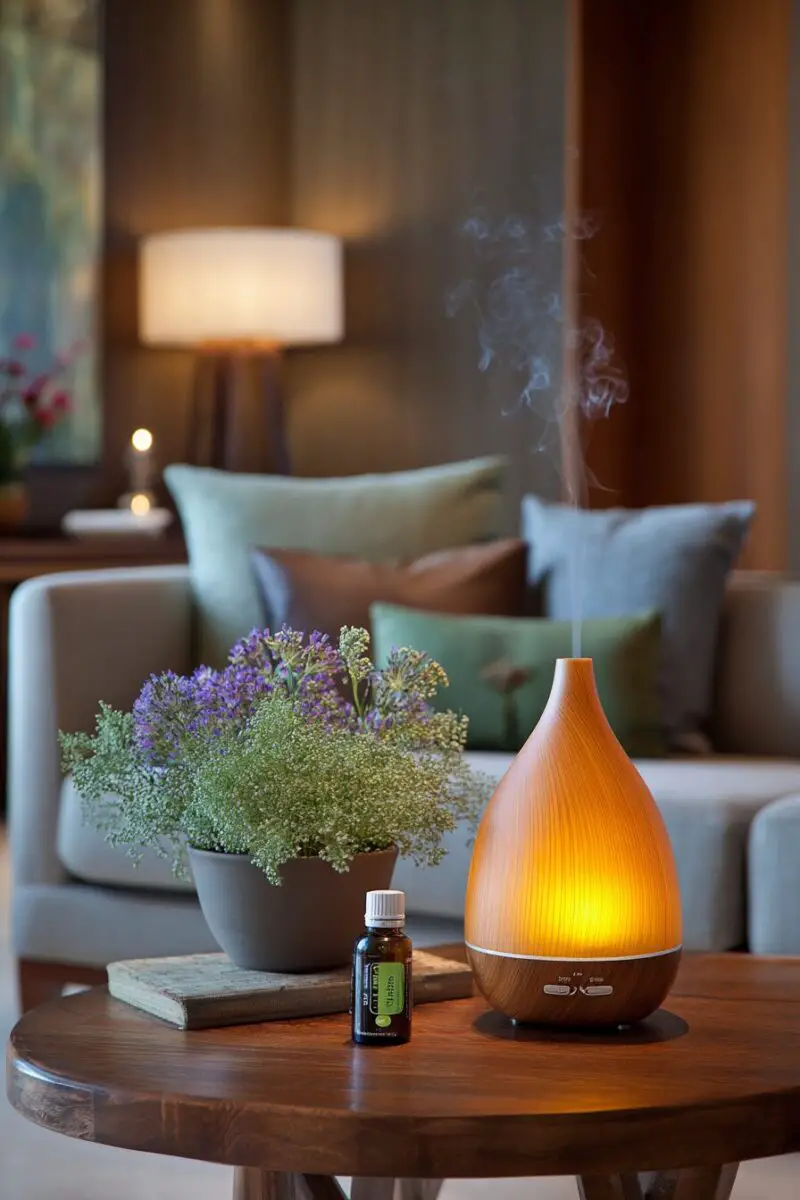
Scent bypasses conscious thought and connects directly to the emotional brain, making aromatherapy one of the fastest routes to altered consciousness.
Create an aromatherapy command center with a variety of diffusion methods—ultrasonic diffusers for everyday use, essential oil burners for ritual occasions, and reed diffusers for constant subtle fragrance.
Organize your essential oil collection in a dedicated wooden box or display shelf where bottles are protected from light but easily accessible.
Learn to create custom blends for different purposes—lavender and chamomile for relaxation, rosemary and peppermint for focus, and frankincense and myrrh for spiritual practice.
Incorporate dried herbs and flowers in bowls or sachets that can be crushed between your fingers to release natural fragrances when needed.
Install small shelves near seating areas to hold aromatherapy accessories, ensuring scents are always within arm’s reach during meditation or relaxation.
Natural beeswax candles infused with essential oils provide both fragrance and the primal element of fire for deeper ceremonial experiences.
Create seasonal scent rotations that connect you to the natural world—lighter floral scents in spring, herbal aromas in summer, earthy fragrances in fall, and warming spices in winter.
Install small hooks for hanging bundles of dried eucalyptus or lavender in your shower, releasing aromatherapy through steam for an immersive start to your day.
Incorporate scented drawer liners or sachets in storage areas so that every object in your spiritual space carries a subtle signature fragrance.
Remember that less is more with scent—subtle aromatherapy creates an invitation rather than an overwhelming experience that could distract from your practice.
TRENDING NOW
15 Innovative Craft Room Layouts for Any SpaceLight and Shadow Play
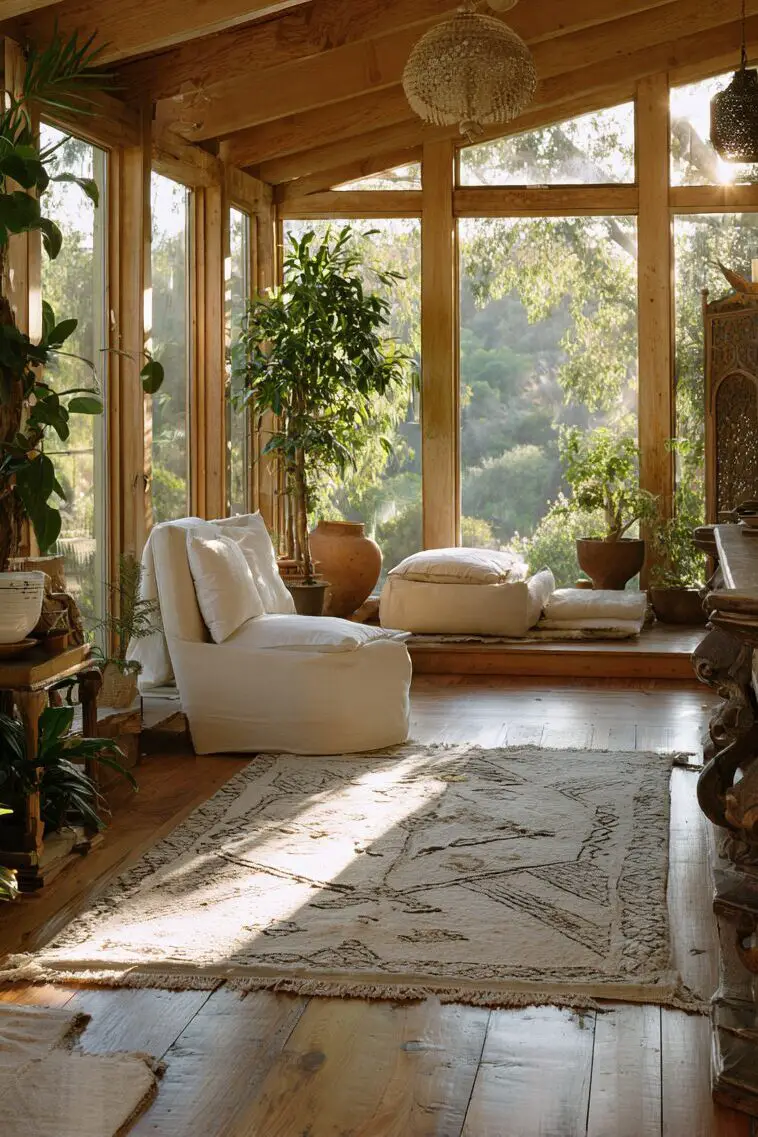
Light is perhaps the most powerful element in creating spiritual ambiance, affecting everything from mood to circadian rhythms to the perception of space.
Begin by mapping the natural light patterns in your room throughout the day, noting where sunbeams fall at different hours and positioning meditation spots accordingly.
Install sheer curtains that diffuse harsh direct sunlight into a soft glow that bathes the room in gentle illumination.
Himalayan salt lamps emit a warm, orangey-pink glow that not only soothes the eyes but may help cleanse the air through negative ionization.
Create a candle corner with holders at varying heights, using flameless LED options for safety during meditation while still capturing that flickering quality of real flame.
Crystal suncatchers strategically hung near windows will cast rainbow prisms across your space during certain hours, creating magical light moments.
String lights with tiny bulbs woven through gauzy fabric create a starry effect that transforms an ordinary ceiling into a celestial experience.
Shadow puppetry screens or intricate cut metal lanterns cast fascinating patterns that transform blank walls into moving art pieces.
Light projectors designed for meditation spaces can wash your walls with slowly moving colors, auroras, or starscapes that entrain the brain into relaxed states.
Remember that darkness is equally important—a space that can be fully darkened allows for different types of meditation practices focused on the internal landscape.
TRENDING NOW
Inspiring Women Cave Designs Just For YouPersonal Altar Creation
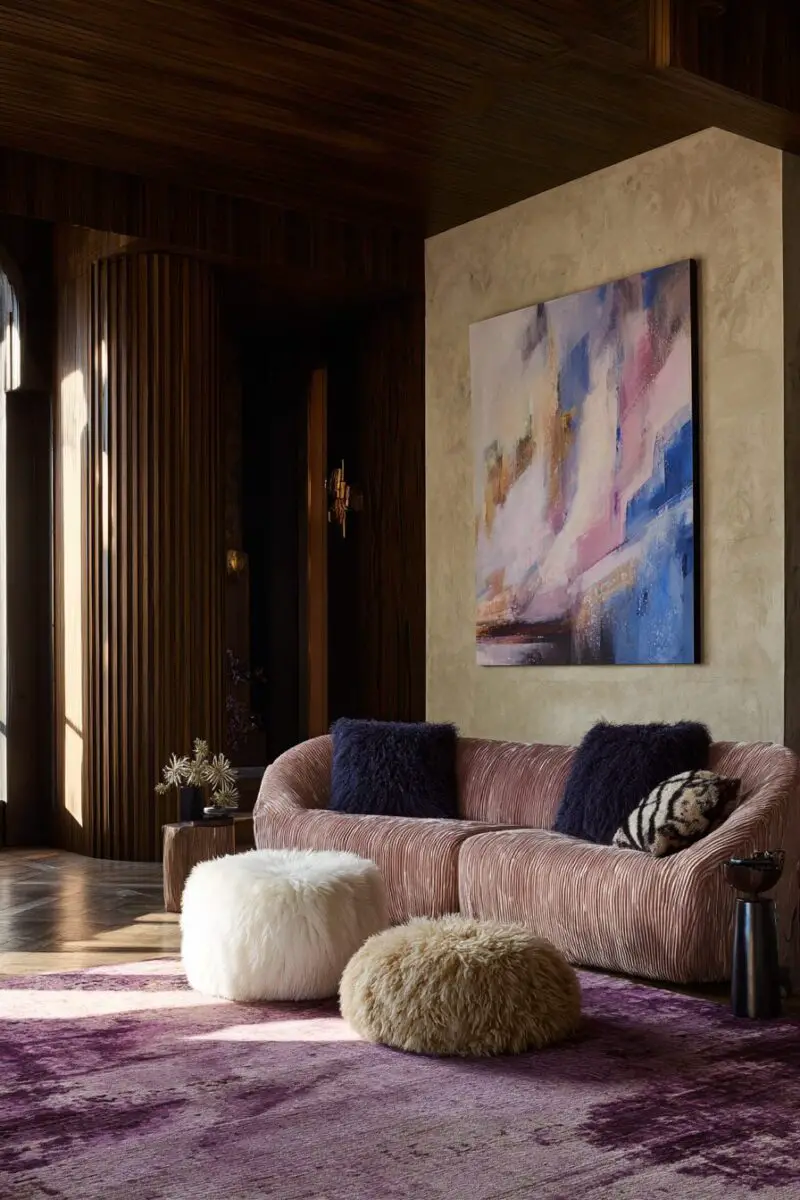
An altar serves as the focal point of your spiritual practice—a physical representation of your inner landscape and aspirations.
Begin by selecting a location that feels naturally sacred—perhaps near a window, in a quiet corner, or facing east to catch the morning light.
Choose a surface that feels meaningful—this could be a special table, a floating shelf, a repurposed vintage suitcase, or even a section of floor space defined by a beautiful cloth.
Incorporate representations of what you’re cultivating—photos of loved ones for connection, seeds or growing plants for abundance, or calm water for peace.
Allow your altar to evolve over time rather than creating it all at once—this allows it to remain an authentic reflection of your journey rather than a static display.
Create seasonal rituals for refreshing your altar, perhaps aligning with solstices, equinoxes, or personally significant dates that mark passages in your life.
Include handwritten intentions, prayers, or quotes that resonate with your current spiritual focus, changing them as you evolve.
Leave some empty space on your altar to represent potential and possibility—a fully crowded altar leaves no room for new insights or directions.
Create a small ritual for approaching your altar, such as washing your hands, taking three conscious breaths, or speaking a phrase that marks the transition to sacred time.
Remember that an altar is not meant to be perfect or impressive to others—its power comes from the personal meaning imbued in each carefully selected item.
TRENDING NOW
Unlock Your Dream: 13 Envious Tree House DesignsTextile-Rich Comfort Zone
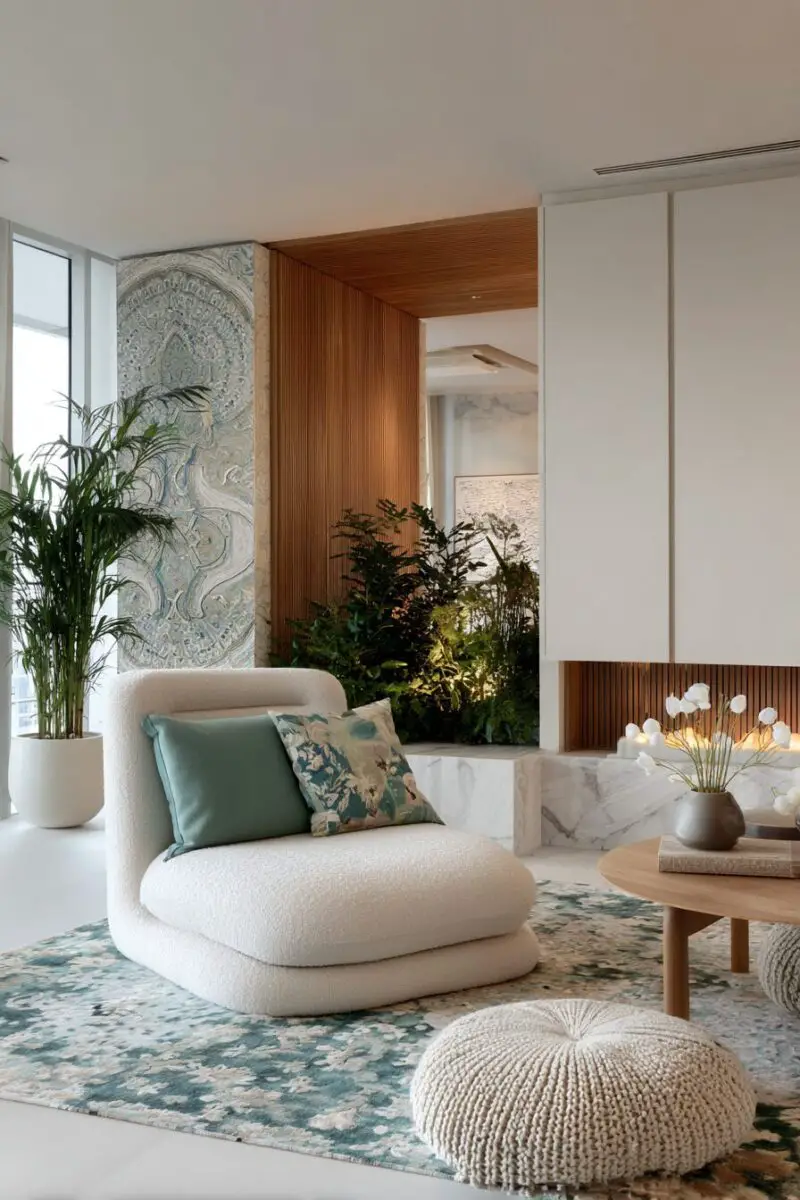
The tactile experience of different fabrics creates an immediate sensory pathway to relaxation that bypasses mental chatter.
Begin with a foundation of softness underfoot—a plush area rug, sheepskin, or layered textile mats define your spiritual space while cushioning your body during seated practices.
Create a cocoon-like meditation nest using floor pillows of varying firmness stacked to support different postures—some for sitting, others for reclining.
Incorporate weighted blankets (around 10% of your body weight) that create gentle pressure stimulation, activating the parasympathetic nervous system for deeper relaxation.
Select fabrics with different textures—smooth silk for cooling properties, nubby linen for earthy groundedness, and soft velvet for luxurious comfort.
Wall hangings or tapestries not only add visual interest but also improve acoustics by dampening echo and creating a quieter environment for practice.
Incorporate textiles with cultural significance that connect you to spiritual traditions that resonate with your path—prayer rugs, meditation shawls, or ceremonial cloths.
Create intentional color themes through your textile choices—blues and greens for calm, purples for spiritual connection, whites and creams for clarity and purity.
Opt for natural fibers whenever possible—cotton, wool, silk, and hemp carry different energetic qualities and connect your space to ancient textile traditions.
Remember that textiles absorb energy over time—establish regular cleansing practices like sunning, gentle washing, or smudging to refresh their properties.
Mindful Art Gallery
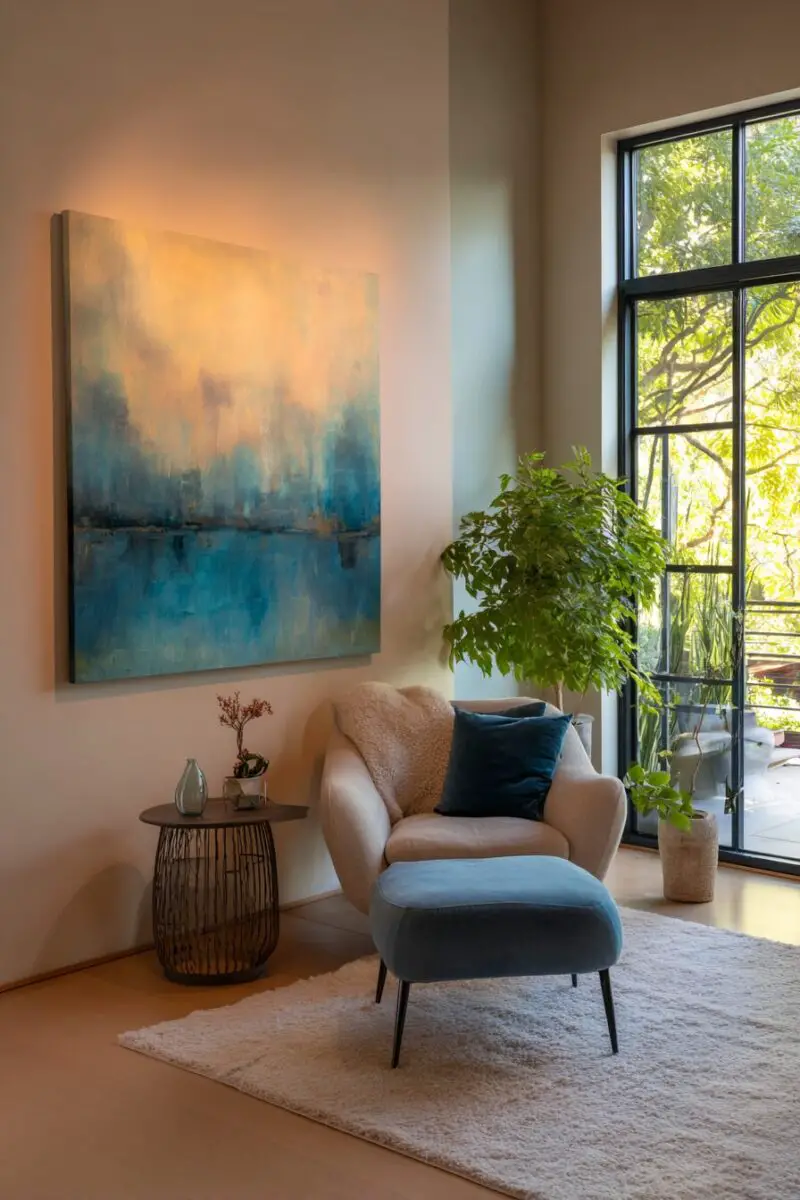
Visual inspiration creates contemplative opportunities throughout your day, with each glance offering a moment of spiritual connection.
Create a dedicated wall for rotating artwork that reflects your current spiritual focus—this becomes a visual journal of your evolving practice.
Incorporate mandalas—circular symbolic representations of the universe—which naturally draw the eye inward and can serve as focal points for meditation.
Choose a piece from an artist whose work resonates with your spiritual path—supporting creators infuses your space with collaborative energy.
Create a small studio corner within your spiritual room for your own creative expression—keeping art supplies visible encourages spontaneous creative meditation.
Thangka paintings or scroll art can be gently unfurled during practice and rolled away after, creating a ritual around revealing sacred imagery.
Install adjustable lighting that can highlight different artworks depending on your focus or the time of day, creating a gallery-like experience.
Create a designated shelf or table for a rotating selection of art books that provide inspiration and learning related to spiritual imagery across cultures.
Incorporate mirrors strategically placed to reflect artwork, creating unexpected viewpoints and reminding you that perception shapes reality.
Display personal creations alongside professional works without hierarchy—a child’s drawing can carry as much spiritual power as a masterpiece.
Remember that negative space is crucial in a mindful art gallery—leaving breathing room between pieces allows each to be fully appreciated rather than creating visual overwhelm.
TRENDING NOW
13 Moody Home Library Designs To Inspire YouWater Element Oasis
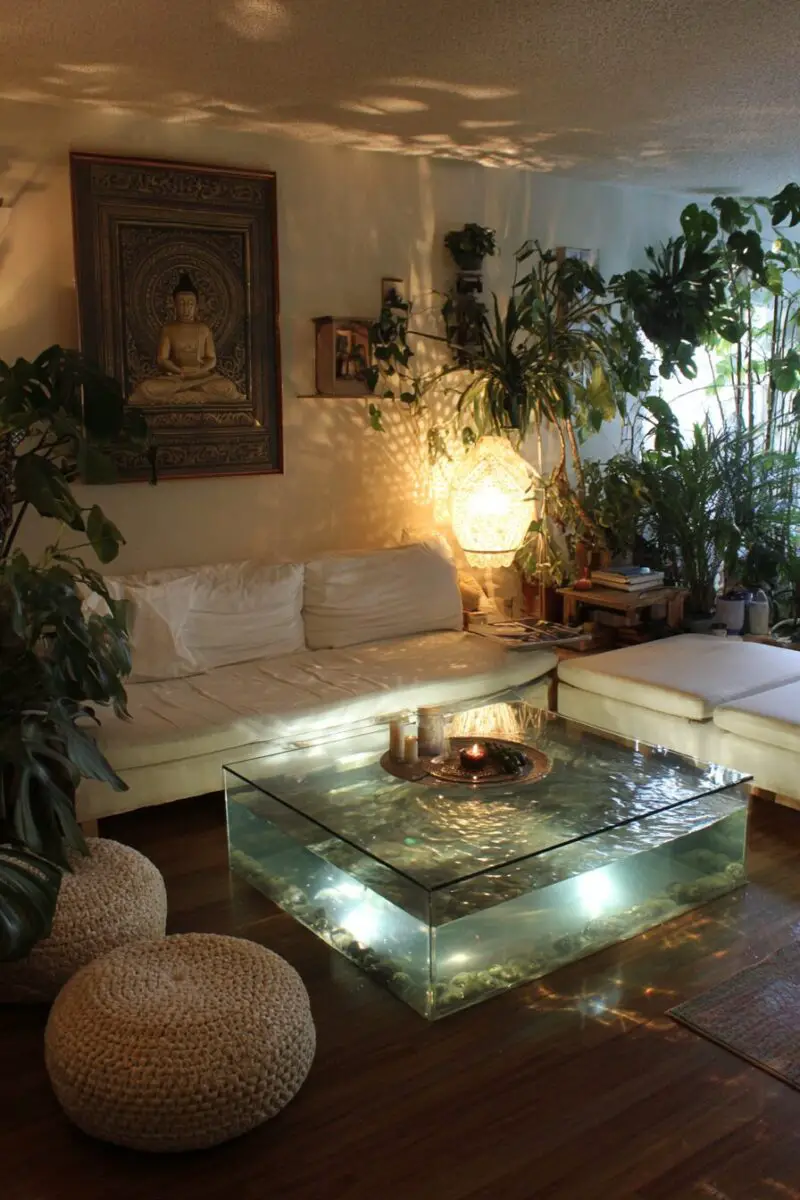
Water carries powerful symbolic meaning in virtually every spiritual tradition, representing both flow and reflection, cleansing and depth.
Begin with a tabletop fountain as your centerpiece—the sound of moving water immediately signals to your nervous system that it’s safe to relax.
Select a fountain with personal significance—perhaps stones collected from meaningful places or a design that resonates with your spiritual path.
Install a compact wall fountain that creates the gentle sound of rainfall cascading over natural stone or copper surfaces.
Place mirrors strategically to amplify the visual effect of water features, creating the illusion of more expansive water elements than actually exist.
Incorporate water-inspired artwork—paintings of oceans, rivers, or rain create the psychological benefits of water even when actual water features aren’t possible.
Create a ritual water bowl used specifically for cleansing your hands or symbolic washing before spiritual practice, connecting you to purification traditions.
Install a small essential oil diffuser that creates visible mist, combining the benefits of both water and aromatherapy elements.
Incorporate seashells, river stones, or beach glass as tangible connections to bodies of water that hold special meaning in your life.
Remember that water features require maintenance—establish a regular schedule for cleaning and care that becomes part of your spiritual practice rather than a chore.
The truly transformative space is the one that feels authentically yours, supporting your unique spiritual journey with elements that speak directly to your soul.
Start with one idea that resonates most deeply, and allow your sacred space to grow organically from there.

